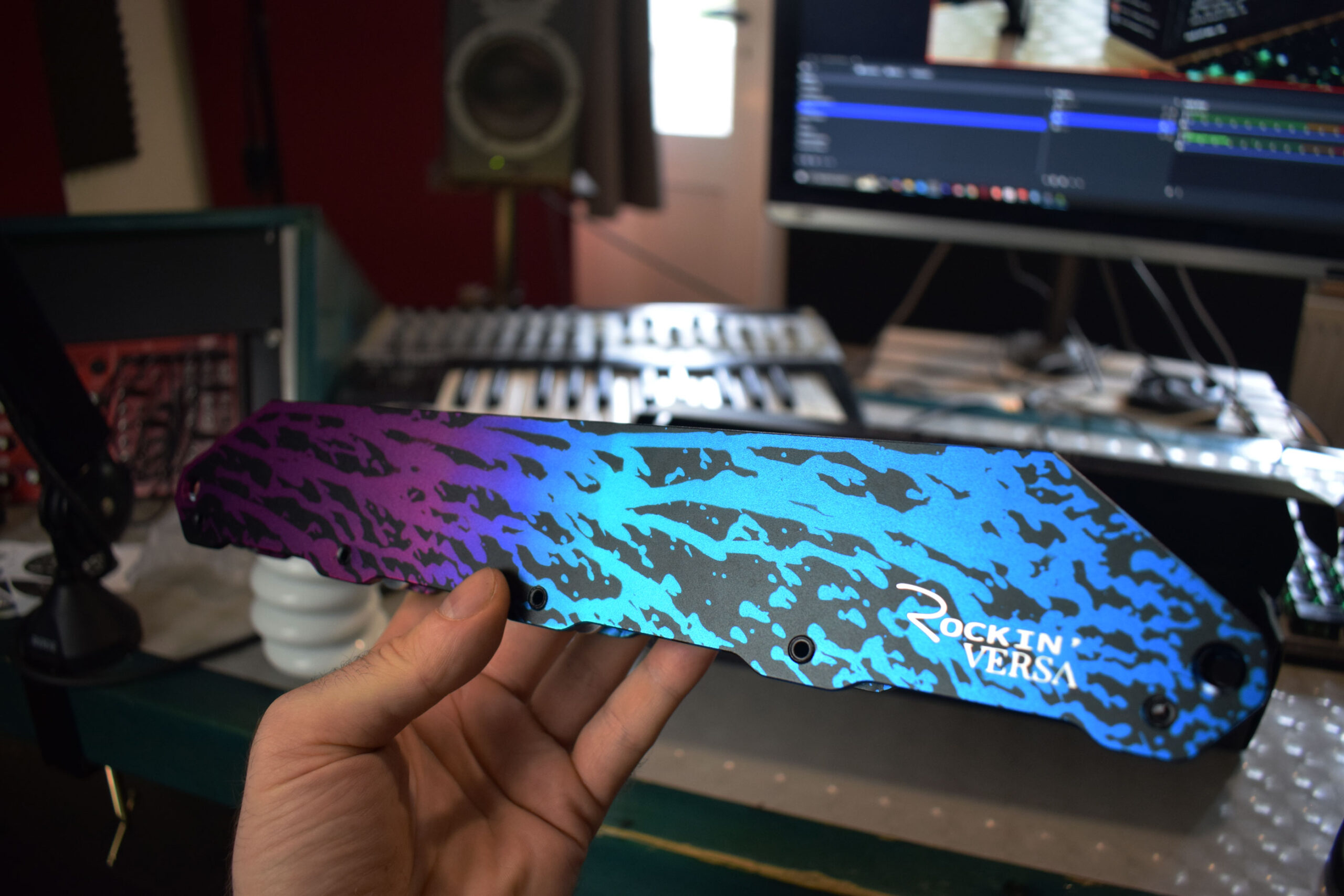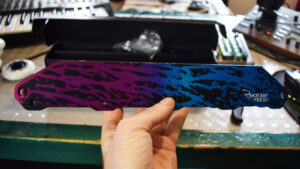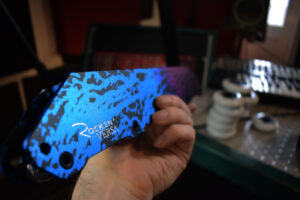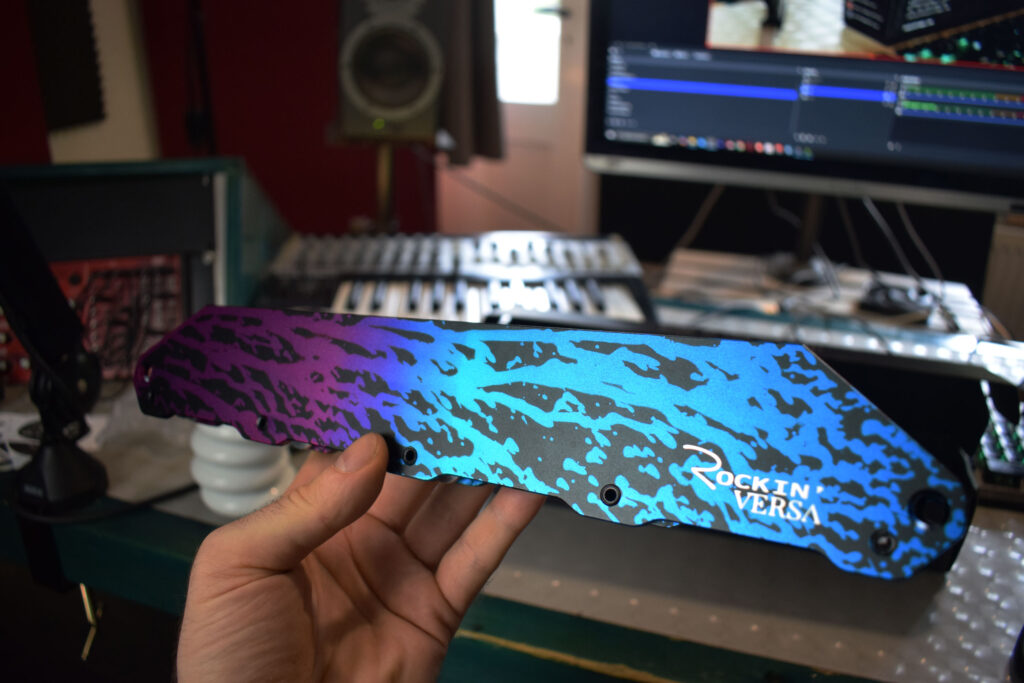Rolling Back to Life: How Inline Skating Found Me Again
Let me take you on a journey, one that starts in the late 90s and rolls right into today. It’s a story about rediscovery, evolution, and the pure joy of movement.
The Early Days: A Self-Taught Glide
My first pair of inline skates arrived when I was around eight. For the next few years, I was inseparable from them, zipping around my Munich neighborhood on some pretty basic Rollerblades or K2s. I remember riding an 80mm, four-wheel setup. Back then, the internet wasn’t in every home, so every trick, every turn, every bit of speed I mastered came purely from trial and error. I was completely self-taught, driven by an early knack for technical movement and a hunger for speed. Skateparks and freeride sessions were my constant companions.
Then, as often happens in childhood, life shifted. My skates broke, or perhaps I simply outgrew them. My memories of how they left my life are hazy, overshadowed by a tumultuous childhood. For years, skating remained a cherished, distant memory.
The Renaissance: Rolling Back into My World
Decades later, a couple of unexpected events conspired to bring skates back into my life. Believe it or not, one was the vibrant, cell-shaded world of Jet Set Radio. A random YouTube video made me dig out my ancient original Xbox, and suddenly, those iconic skating vibes were calling to me again.
A few days later, a casual conversation with a friend in a park sealed the deal. She mentioned she’d just picked up a used pair of inline skates. That was it. That conversation reignited a spark that had lain dormant for decades.
That very same week, I plunged into an obsessive deep dive, determined to catch up on two decades of inline skating evolution. And oh, how it had evolved! New styles, new frame configurations, entirely new philosophies of movement had emerged. I was utterly blown away by the sophistication and diversity.
A New Dawn with a New Skate
After weeks of research, I made my decision: the UFR 310 from the French company FR. Modularity was key for me, and this boot offered it in spades thanks to its Universal Frame System (UFR) mount. This standardized frame system, once popular in aggressive inline, had now found its way into countless non-aggressive setups. I deliberately skipped FR’s more popular FRX model, and it was the right move. Choosing the UFR meant I could effortlessly mount alternative frames like the Rockin’ Versa later on. This was a game-changer – no longer locked into one brand’s system, I could mix and match to my heart’s content.
When I finally laced up for my first session, it was as if I’d never stopped. The basic moves were etched into my muscle memory. Sure, going fakie was a bit shaky at first, but after just a few sessions, it all came flooding back. The feeling was exhilarating.
The Wizards of Skating: A Paradigm Shift
Then I stumbled upon Wizard Skating, and something deep within me truly lit up.
A style that merges technical skill with incredible flow, rhythm, and expression? I was instantly sold. Wizard Skating struck me as a fascinating evolution, a branch that grew from aggressive inline but veered sharply towards fluidity over impact.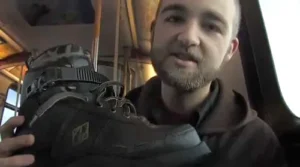
Its roots trace back to the early 2000s, with the experimental work of “Mushroom Blading” pioneered by Canadian skaters like Todd McInerney and Joey McGarry. They challenged the limitations of traditional anti-rocker frames and began experimenting with “rockered” setups, mimicking the curved blade of an ice skate. This simple change was revolutionary, suddenly enabling carving, intricate edge transitions, and continuous, flowing motion.
Then came Leon Basin, a visionary skater and founder of Shop Task and Wizard Skates. He refined this concept, designing the iconic five-wheel rockered frame that became the gold standard for this flow-focused discipline. Leon didn’t just build gear; he defined a style, codified a movement, and ignited a global community.
Metamorphosis: The Call for Bigger Wheels
I started to incorporate “wizardy” moves into my sessions on the UFR 310, which by then had developed a natural rocker. I was carving harder, flowing more, and joining weekly sessions with local skaters, refining technique around slalom cones.
But it soon became clear: my current gear was holding me back. I yearned for something bigger, a setup that could support deeper movement chains, sharper edge transitions, and longer, more expansive carves. I knew what I needed: one of those “giant” frames, the kind Leon and his disciples rode.
I dove headfirst into the rabbit hole. Should I sell a kidney for a Wizard Advanced Frame? Go with an Endless 4×90? Explore some of the fringe options?
Then, I found it.
The Versa: My Perfect Match
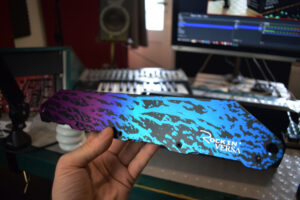 The first time I saw the Rockin‘ Versa, I had an instant realization: this was my frame.
The first time I saw the Rockin‘ Versa, I had an instant realization: this was my frame.
True to its name, the Versa offers two distinct configurations: a classic five-wheel 5x80mm setup or a mixed 100/80 layout – a 100mm wheel at each end with three 80mm wheels in the middle. I opted for the 100/80 setup, which boasts a 344mm wheelbase. It looks massive, like it would be clunky and unwieldy, but in practice, it’s absurdly nimble.
Why? Because you’re not skating on all five wheels simultaneously. You’re mostly gliding on two or three wheels at any given moment, creating an incredible balance of agility and stability that feels almost magical.
First Contact: Unboxing a New Chapter
When the Versa bundle arrived, I was ecstatic. I remember carefully opening the matte black box, with “You Rock!” printed inside, setting it gently on my studio desk. I had ordered the “Glam” edition, and when I finally held the frames in my hands, I was stunned. The design, the finish, the feel – it looked almost unreal, like a piece of art.
But it was very real.
I slid one of the two frames out of the packaging like it was a sacred object. This wasn’t just gear; it was a key to a new chapter in my skating journey.
And that chapter had just begun.


 The first time I saw the Rockin‘ Versa, I had an instant realization: this was my frame.
The first time I saw the Rockin‘ Versa, I had an instant realization: this was my frame.

